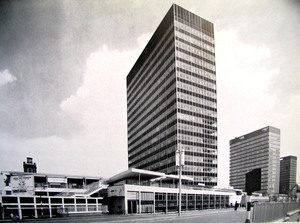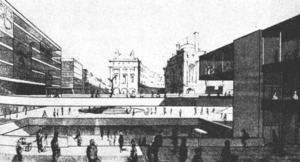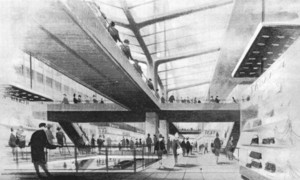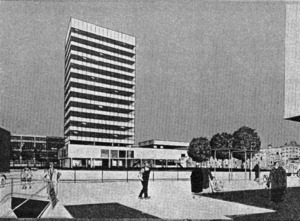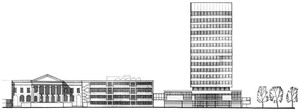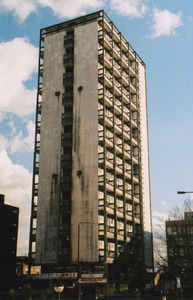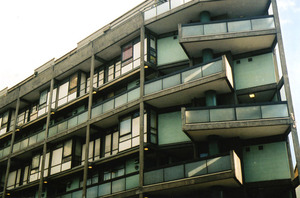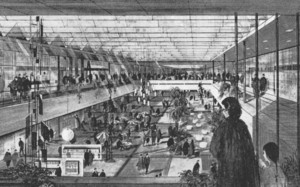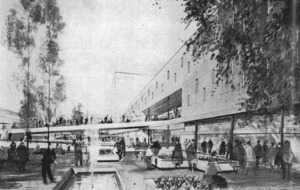The Elephant Remade
The war had devastated the Elephant, but it ushered in a new age of great optimism and confidence in the ideology of architectural modernism and its promise of a new built form.The new built environment, long advocated by architects and planners in the pre-war years, became symbolic of a new society based on the tenets of the welfare state. The Abercrombie plan was not simply a road plan to relieve congestion, its central principle was that all towns must decentralise if satisfactory levels of living and working are to be obtained.39 This included dealing with depressed housing stock and providing open space. Segregated land use and living densities were to become the blueprint for Londons growth over the next 30 years. There was real faith that the reform of the physical environment could have a positive influence on all aspects of social life. The LCC acquired new powers with each of the 1944 and 1947 Town and Country Planning Acts, which enabled simpler and more expeditious procedure for redevelopment of areas of extensive bomb damage,40 and set about implementing the new post-war consensus at the Elephant.
In 1947 another Piccadilly Circus was enthusiastically announced in the Evening Standard. It would be at the heart of 49 acres of a comprehensive redevelopment site, second only in priority to Stepney and Poplar. It was estimated to be completed within 5-15 years and was hugely ambitious.41 In line with contemporary recommendations all industry and housing would be relocated to provide for a new commercial district centred on a vast roundabout capable of handling double the pre-war levels of traffic. At its centre was to be a rebuilt underground station combined with a sub-level bus station some twenty feet below the road. Above ground the office district would be bordered by municipal buildings opening onto a thirty-seven acre urban park to its west (see fig 21). Figure 21
Figure 21
In 1951 it became quite clear that the initial plan was grossly expensive. A period of austerity had followed the immediate post-war optimism and both capital and building supplies were scarce.The brave new world was put on hold for some revision. In the same year a reconfigured scheme was drawn up and confirmed in the LCCs Administrative County of London Development PlanThis had also been made necessary as the owners of the Metropolitan Tabernacle had refused to relocate from their bombed out site in Newington Butts.42
The 1951 scheme proposed a reduced area of 31 acres and a road plan based on two roundabouts linked by an axial roadway central to 6 development sites (see map fig 22). The new plan headed by Graeme Shankland43 also put a new emphasis on re-creating “a shopping area for the communities within the larger area of the south bank of the Thames,” that recalled its pre-war status and included a pedestrianised ‘high street’, which mimicked that of the earlier Walworth Road (see fig 23). Contemporary commercial developments were already under construction in cities like Coventry and Plymouth. This plan also sanctioned the use of subways as a means of navigating the area, but with the recommendation of a sunken northern roundabout as an open space lined with additional commercial premises, which could pull the scheme together. The MOT began road construction soon afterwards (see fig 24).
In 1956 yet another plan was published under the direction of the LCCs Dr Leslie Martin. It was, markedly peripheral, according to one observer, following the existing road plan all too closely,44 which by then had already started. The plan gave more definitive proposals for architectural treatment (see fig 25). The high street idea had been abandoned in favour of a spacious piazza open to the road with a new tube station and public house. The northern roundabout was still to have a sunken central area and the whole scheme was to have a focal point in a new axially aligned tall building of seventeen storeys. The LCC was adamant about the schemes good intentions:
The Council regards the Elephant & Castle as one of its most important comprehensive reconstruction projects. A unique opportunity is presented for creating a new shopping, business and recreational centre for south London, for effecting a major traffic improvement and for realising fine civic design.45
Two years later in 1958, a new looser development emerged. Overseen by the LCCs Hubert Bennett, the new emphasis abolished the perimeter building of the previous scheme in favour of a freer style of planning with more occasional public spaces between buildings and a mixture of towers and low blocks set back from the road (see fig 26).The Elephant would be announced at the skyline by a much taller building at its northern end. The Architects Journal deemed it progress,and heralded the evolution as a, successful and exciting design, though they lamented the inadequate road system and slow pace of building.46 On the insistence of the MOT the plans included a new electricity sub-station on the northern roundabout site and rejected original proposals for the sunken shopping area. This move was to prove significant.
The Faraday Memorial, as the electricity sub-station was dubbed, was the first new structure to be completed at the Elephant in 1961. It was by the LCC Architects department under Rodney Gordon and was the first building of its kind in the UK to be clad in stainless steel. It was a bold, avant-garde design that trumpeted the scheme to the thousands of passing motorists (see fig 27). An original proposal of an inverted pyramid with a clear glass facade, so that the public could marvel at the workings, was shelved for fear of damage from vandals (see fig 26).47
 Figure 27
Figure 27 Figure 28The early 1960s were a great period of building at the Elephant and Castle. After fifteen years of re-planning, construction had begun at five of the six sites allocated in the final plan (see fig 28 & map fig 29). London was in the midst of an unprecedented office boom. It had been launched with the Conservatives Town and Country Planning Act in 1954 thatlifted wartime building licences and development charges. Ministers at the time stated that the people whom the government must help are those who do things; the developers, the people who create wealth whether they are humble or exalted.48 Uncoordinated commercial development began to puncture the skyline of the city, but seemed to deliver part of the planners agenda: architecture fit for the twentieth century.49 Despite a slight response from the commercial sector, the LCC fully expected the Elephant to eventually ride this boom along with the City and the West End once it had demonstrated what could be achieved.50 In 1962 the first commercial premises were completed at the southern end of the scheme at Site 6. Castle House was designed by the LCC Architects Department under Hubert Bennett and provided much needed floor space for local traders (see map fig 29 & figs 30 & 31).
Figure 28The early 1960s were a great period of building at the Elephant and Castle. After fifteen years of re-planning, construction had begun at five of the six sites allocated in the final plan (see fig 28 & map fig 29). London was in the midst of an unprecedented office boom. It had been launched with the Conservatives Town and Country Planning Act in 1954 thatlifted wartime building licences and development charges. Ministers at the time stated that the people whom the government must help are those who do things; the developers, the people who create wealth whether they are humble or exalted.48 Uncoordinated commercial development began to puncture the skyline of the city, but seemed to deliver part of the planners agenda: architecture fit for the twentieth century.49 Despite a slight response from the commercial sector, the LCC fully expected the Elephant to eventually ride this boom along with the City and the West End once it had demonstrated what could be achieved.50 In 1962 the first commercial premises were completed at the southern end of the scheme at Site 6. Castle House was designed by the LCC Architects Department under Hubert Bennett and provided much needed floor space for local traders (see map fig 29 & figs 30 & 31).  Figure 29It was warmly received. The Architects Journal in August found, little to criticise and much to praise and until New Zealand House is completed it is possibly one of the best examples for anyone wanting to look at a good office block in London.51
Figure 29It was warmly received. The Architects Journal in August found, little to criticise and much to praise and until New Zealand House is completed it is possibly one of the best examples for anyone wanting to look at a good office block in London.51
The next completed building at Site 2, Alexander Fleming House, by Erno Goldfinger in 1963, received similar praise in the Architectural Review
Erno Goldfinger took much interest in the Elephant and Castle. He produced a scheme for the shopping centre and later in 1967 completed a new Odeon Cinema (see figs 34 & 35). The site had originally been covered by the massive Trocadero complex of 1930. Earlier plans included its retention (see fig 25), but it was replaced by Goldfingers much smaller54 yet distinctive concrete structure, which made much of expressing the enclosed elements on its outside. It was widely regarded as the most important post-war building of its type, coming at a time when cinema audiences were in decline.
In 1960, while working on Alexander Fleming House, Goldfinger produced his own masterplan for architectural treatment at the Elephant, which was to be influential on later additions. In it he proposed a greater series of isolated blocks in a geometric whole and emphasised the necessity of the tower at the northern end (see figs 36 & 37). Goldfingers abstraction of space was based on establishing measured and well balanced55 sculptural components, which could be seen as complementary compositions. Architecture, he wrote, is the Art of defining space. The space thus defined is used for being in, and the user stationary or moving, is subjected to its impact.56 Quite where one would view these artworks from was not immediately apparent: Goldfingers drawings show imaginary aerial perspectives (see fig 38). Speaking of the experience of the Elephant, Cherry and Pevsner gave some clearer indication when they declared it, impressive when seen at speed, but bewildering when one is a pedestrian.57 The wide and fast moving spaces of the traffic system made the Elephant a particularly appropriate site for applying alternative modernist architectural groupings. It perfectly illustrates the modern scenario where the automobile could set the scale of the urban environment. Tim Benton in Le Corbusier: Architect of the Century
The Elephant and Castle was not unique in London as a space in which the role of the car was exalted: nor was it necessarily the best. By 1959 it had been joined by the ambitious London Wall development to the north of the City. Planned in conjunction with the City Corporation, the LCC had persuaded developers to work within its own masterplan for a geometric architectural arrangement of office blocks at equal distance along a newly formed dual carriageway (see fig 39).The composition bore striking resemblances to Le Corbusiers La Ville Radieuse in its street line treatment and could be best appreciated from a moving vehicle. This was used to great effect in Antonionis 1966 film Blow Up.
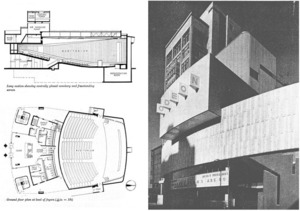 Figure 34 / 35Despite taking an early lead with planning a new road network, London as a motropolis was held up by the refusal of central government in 1950 to fund anything other than a few key improvements on the existing network.59 The Elephant and Castle was among these. The LCC was forced to abandon Abercrombies network of ringways and there followed a period of laissez faire
Figure 34 / 35Despite taking an early lead with planning a new road network, London as a motropolis was held up by the refusal of central government in 1950 to fund anything other than a few key improvements on the existing network.59 The Elephant and Castle was among these. The LCC was forced to abandon Abercrombies network of ringways and there followed a period of laissez faire
Now is the time to get the bulldozers to work. Because even if a fleet of bulldozers was turned loose in London and all the drivers blindfolded they could not do much unnecessary work because of the immensity of the problem.62 The response to such calls was not new. In 1959, the Architects Journal published a series of ambitious visions of a rebuilt city around a vast urban motorway network. London would become a homage to Los Angeles . Throughout the period there appeared numerous schemes that claimed the solution to congestion and revived, in various guises, Abercrombies 1943 plan (see figs 41 & 42). However, apart from the transformation of Hyde Park Corner and Park Lane into the citys first new urban highway, London provided little relief for the car. Preventative measures were the immediate response. As the ribbon was cut on the M1 motorway in 1958, ushering in limitless speed, the city saw the introduction of parking restrictions, traffic wardens and between 1960-65, fifty eight miles of one way systems.63 It was overseen by the London Traffic Management Unit whose responsibility it was to squeeze the network: To extract the last ounce out of the existing street system,as its creator Ernest Marples put it.64
In 1963 the Buchanan report on Traffic in Towns was published. It had been commissioned by Ernest Marples in response to growing pressure from road lobby groups, unions and public concerns to produce a plan.65 It highlighted the critical condition in towns and recommended substantial reorganisation to accommodate the car. 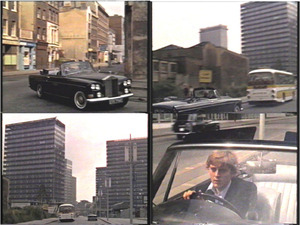 Figure 40
Figure 40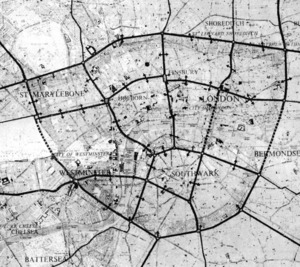 Figure 41It proposed solutions of how it would be possible to live with the motor car through dividing the city into urban rooms or environmental areas, not free from traffic, but designed in such a manner that their traffic was related in character and volume to the environmental conditions being sought66 The function of new road networks would be to service the environmental areas and not vice versa. Most importantly, the report recommended the pursuit oftraffic architecture. This implied the designing of buildings and access in one process. Buchanan advocated a third dimension. New developments were to be of a multi-level design that placed roads beneath pedestrian decks with access facilities (see fig 43):
Figure 41It proposed solutions of how it would be possible to live with the motor car through dividing the city into urban rooms or environmental areas, not free from traffic, but designed in such a manner that their traffic was related in character and volume to the environmental conditions being sought66 The function of new road networks would be to service the environmental areas and not vice versa. Most importantly, the report recommended the pursuit oftraffic architecture. This implied the designing of buildings and access in one process. Buchanan advocated a third dimension. New developments were to be of a multi-level design that placed roads beneath pedestrian decks with access facilities (see fig 43):
unless the public accepts that there has to be comprehensive redevelopment over large areas then the opportunities for dealing imaginatively with traffic will be lost67
The report was hugely influential and, conveniently, cemented academic thought to a growing commercial and public sector desire to modernise and rebuild cities. The car had finally been given approval and reconstruction with it in mind appeared to fulfil some of those utopian tendencies first floated before the war.
The 1960s proved to be a great era of automotive fantasy in London. Long-standing LCC plans for the commercial reconstruction of Piccadilly Circus took on Buchanans Law for comprehensive redevelopment. A competition of 1961, produced a series of large-scale plans which proposed decking over the junction and sinking roads below raised, pedestrian concourses lined with commercial premises (see fig 44). Soon afterwards similar schemes appeared for the comprehensive redevelopment of Knightsbridge and along the length of Oxford Street (see fig 46).
The Buchanan Reports recommendations may have left the Elephant and Castle vulnerable to criticism in its handling of people and traffic, but there was still much excitement surrounding the scheme and its new architectural forms. 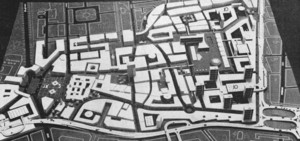 Figure 42
Figure 42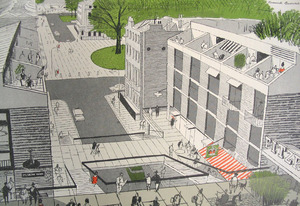 Figure 43In 1964 the LCC completed the London School of Printing and Graphic Arts at Site 5 (see map fig 29 & figs 47 & 48) and it was quickly followed by the Draper Estate at Site 6 in 1965. Its residential tower, at 230 feet, opened as Londons highest and was designed as the dramatic climax of the southern end of the complex, (see figs 49 & 50) its elevations designed in such a way that they may be able to accommodate neon advertising.68
Figure 43In 1964 the LCC completed the London School of Printing and Graphic Arts at Site 5 (see map fig 29 & figs 47 & 48) and it was quickly followed by the Draper Estate at Site 6 in 1965. Its residential tower, at 230 feet, opened as Londons highest and was designed as the dramatic climax of the southern end of the complex, (see figs 49 & 50) its elevations designed in such a way that they may be able to accommodate neon advertising.68
After some delay, the centre piece to the whole scheme was completed. In 1965 the Elephant and Castle Shopping Centre finally opened. The shopping scheme (Site 1) had been the most anticipated architectural component of the plan, having gone through several design incarnations. When the LCC announced the competition it received 36 entries69 including one from Erno Goldfinger. The competition was won by architects Boissenvain & Osmond for the Willets Group, the LCC apparently impressed most by the architectural conception for the site.70 They proposed a giant new type of building, a fully enclosed American style mall over three levels surmounted by an office block. The mall would be surrounded by generous landscaped piazzas for public use and include the provision of a new tube station entrance, public house and access from the existing railway station (see map fig 29 & figs 51, 52 & 53). Willets claimed it to be the largest and most ambitious shopping venture ever to be embarked upon in London. In design planning and vision it represents an entirely new approach to retailing, setting standards for the sixties that will revolutionise shopping concepts throughout Britain.71
Footnotes
- ↑ Forshaw & Abercrombie, 1943. p.30.
- ↑ C.C. Knowles, The History of Building Regulations in London 1189-1972, 1972. p.132.
- ↑ From Evening Standard, March 21st, 1947. Another Piccadilly Circus at the Elephant.
- ↑ Richardson, Tim, 1979. 424.1.
- ↑ Bendixson, Terence Elephant & Castle: London in Architectural Review, April, 1967. p.281.
- ↑ The ArchitectsJournal, February 16th,1956. p.198.
- ↑ Ibid. p.426.1. LCC statement in Proposals for Redevelopment of the Elephant & Castle, LCC, 1956.
- ↑ Elephant & Castle Mark II in The Architects Journal,October 23rd, 1958. pp.586 & 595.
- ↑ From www.riskybuildings.org.uk/docs/29/faraday/index. 10/03/06.
- ↑ Cowan, P, The Office - A Facet of Urban Growth, 1969. p.165.
- ↑ White, Jerry, London in the Twentieth Century, 2002. p.47
- ↑ Percy Johnson-Marshall Rebuilding Cities, (p.186) quoted in Bendixson, Terence, 1967. p.281.
- ↑ The Architects Journal, August 15th, 1962. p.433.
- ↑ Architectural Review, February, 1963. p.95.
- ↑ Frampton, Kenneth in Architectural Design, October, 1967. p.447.
- ↑ The Trocadero was the largest cinema in Europe when completed and could seat, 5,000 people twice nightly (Williams, Harry,1949). Goldfingers had a capacity of 1050 (The Architects Journal April 19th, 1967.)
- ↑ Object Lesson in The Architects Journal, June 14th, 1989. p.30.
- ↑ Goldfinger in the AA Journal, April 1962 from Bendixson, Terence, 1967. p.281.
- ↑ Cherry, B & Pevsner, N, The Buildings of England. London 2: South, 1983. p.86.
- ↑ Benton, Tim, in Arts Council of Great Britain, Le Corbusier: Architect of the Century, 1987. p.64.
- ↑ Starkie, David, The Motorway Age: Road & Traffic Policies in Post War Britain, 1982. p.13.
- ↑ Starkie, David, 1982. p.11. Starkie notes that the boom in consumer spending wasinitiated by the Conservative governments Setting the People Free initiative. They cut purchase tax on motor cars. However, they coupled this with an 80% cut in the road building budget.
- ↑ Ibid. The 1945 figure for car ownership growth by 1965 was put at 75%. By 1950 it had already doubled. The 1954 estimate for the number of cars in 1960 was put at 8 million. By 1960 there were 9 million. Government figures consistently underestimated automobile growth.
- ↑ Hamer, Mark, 1987. p.53. Comments in 1956 by Colonel Stuart Maynard pro road surveyor.
- ↑ Starkie, David, 1982. p.20. The M1 opened with no fixed speed limit.
- ↑ Ibid.
- ↑ Hamer, Mark, 1987. p.56. Ernest Marples was Conservative Minister of Transport from 1959 to 1964. He was the majority shareholder in Marples Ridgeway, a civil engineering firm that built roads, so hardly impartial in the debate on road building. He also commissionedthe Beeching Report, which reduced the UKs rail capacity significantly.
- ↑ Starkie, David, 1982. p.32.
- ↑ Ibid. p.34.
- ↑ The Contract Journal, November 6th, 1958. p.685. The advertising never materialised.
- ↑ Marriott, Oliver, The Property Boom 1967. p.216.
- ↑ The Architects Journal,July 28th, 1965. p.210.
- ↑ Willets Developments, The Elephant and Castle Shopping Centre, Sales Brochure, 1963. p.1.












